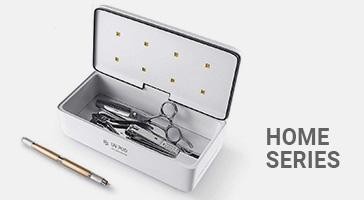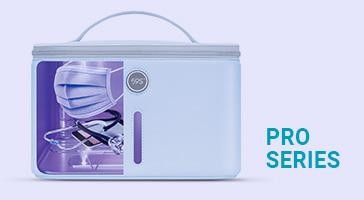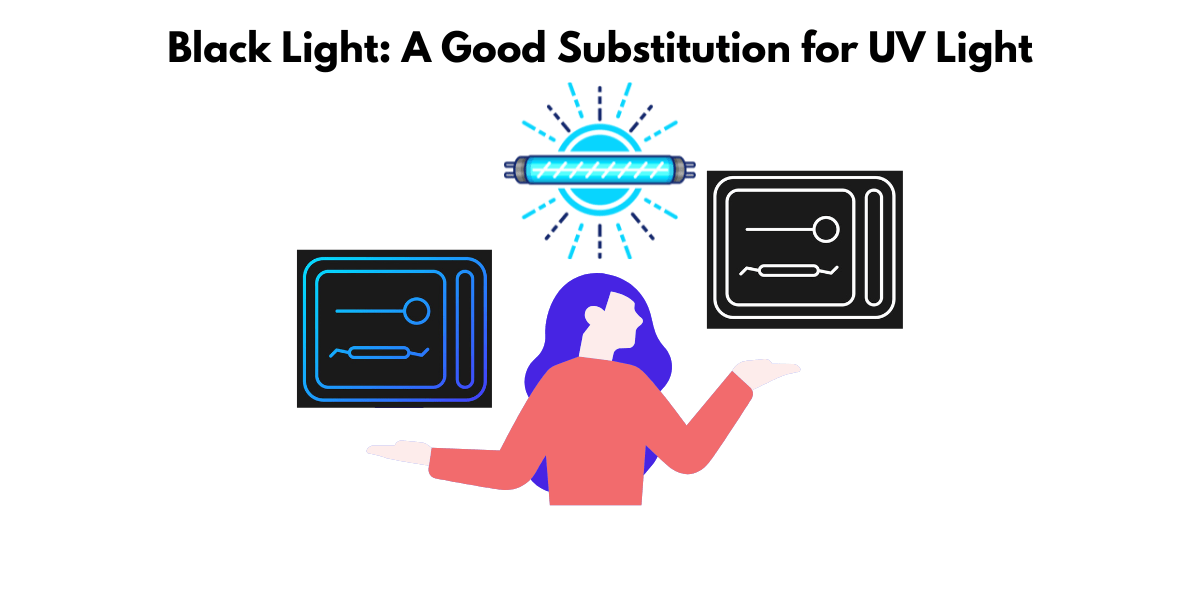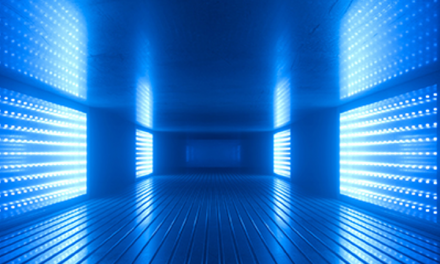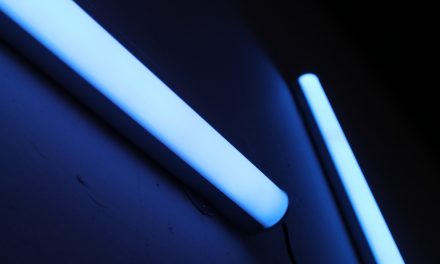Are black lights a good substitution for UV lights?
Germicidal properties of blacklights have been debated for some time. Some people believe that blacklights are a good substitution for UV light, while others think they are not as effective in killing germs.
So, do blacklights have germicidal properties? Are they a good substitution for UV lights?
Let’s take a closer look at the science behind blacklights.
What is a black light?
A black light bulb is a device that emits short-wavelength ultraviolet light. This type of light can be used to see invisible features on objects, such as ink patterns on paper. Black light bulbs are also used in staining and examining specimens.
What are the germicidal properties of blacklights?
Blacklights, also known as UV (ultraviolet) or black fluorescent lights, are used to detect certain substances that would be difficult to identify in visible light. These substances glow brightly under the short wavelength of ultraviolet radiation emitted by blacklights. Blacklights have been used for decades to detect germs in food products, for forensic investigations, and for entertainment purposes like glow-in-the-dark parties. While not a substitute for true germicidal UV lamps, such as those used in water treatment plants and hospital sterilization units, UV LED blacklights are more efficient than traditional fluorescent lamps with no hazardous materials. Additionally, they produce higher brightness levels with a longer life span than traditional bulbs while being easier to clean up if they break. Glowave™ black light neon glow party kits are an example of this type of technology which produces high levels of brightness but has an extended lifespan compared to other versions on the market today.
What is a germicidal UV light?
A germicidal UV lamp is a type of ultraviolet light used to kill germs. It has a higher intensity than blacklights, which generally emit long-wave UV light. Germicidal UV light bulbs are more powerful than blacklights and can be harmful if exposed for a long period. On the other hand, blacklights are better suited for applications such as inspecting products for defects or identifying illegal drugs, observing fluorescence, bug zappers and other insect traps, decorative lighting, and detecting substances tagged with fluorescent dyes.
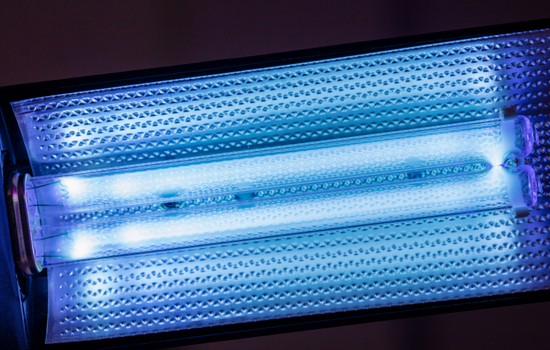
How do blacklights compare to UV Lights in terms of germicidal properties?
We all know how important it is to keep our homes clean and free of germs. But sometimes, some places attract germs no matter how much we clean.
One way to fight back against these pesky critters is by using germicidal lights. But what kind of light should you use? Blacklights or UV lights?
Let’s take a closer look at each type of light and see which is more effective in killing germs.
Wavelength
Research suggests that the wavelength of black light and UV light can affect their germicidal properties. Blacklights typically emit a longer wavelength than traditional UV lights, which makes them more efficient in destroying harmful organisms such as bacteria. This is because the longer wavelength means more photons are emitted; therefore, more energy is released to inhibit or kill these organisms. On the other hand, shorter wavelengths of UV light are less effective at eliminating germs and pathogens due to their lower intensity than black light.
Germicidal properties
Blacklights are usually more efficient than UV LEDs and don’t pose the same risks of exposure to hazardous materials. Blacklights typically last up to 25,000 hours, much longer than fluorescent lamps.
Blacklights, or ultraviolet germicidal irradiation (UVGI) lights, are a type of light that emits ultraviolet (UV) radiation. This UV radiation is invisible to the naked eye but can be seen using special equipment, such as black light detectors. Blacklights are used in various applications, including disinfection, detection of fraudulent documents, and identification of scorpions.
Safety
UV LED blacklights are a safe and efficient option for germicidal properties compared to fluorescent UV blacklights. UV LED blacklights don’t contain mercury or hazardous materials, making them safer. Additionally, they have a longer lifespan and are more affordable than black fluorescent lights. This makes them an ideal choice for applications that require germicidal properties.
Uses
Blacklights and UV lights have different uses. Blacklights are typically more powerful and last longer than UV lights. Blacklights emit ultraviolet (UV) light, which can detect certain materials or objects, while UV light is primarily used to kill germs and disinfect surfaces. Additionally, blacklights are more efficient and last longer than black fluorescent lights due to the use of UV LED technology in their construction. Furthermore, since there is no mercury or hazardous materials in UV LED blacklights, users do not need to worry about any special cleanup procedures after using them.
Efficacy
Blacklights are typically more efficient than UV flashlights and last longer. This is because blacklights don’t contain mercury or other hazardous materials. Additionally, blacklights typically last up to 25,000 hours, while fluorescent lamps will eventually burn out.
Black lights, also known as ultraviolet or UV blacklights, are a type of light that emit ultraviolet radiation. This radiation is invisible to the naked eye but can be seen using special filters. Blacklights are used in various applications, including security, forensics, and lighting. They have many advantages over other light sources, including their higher efficiency and longer lifetimes. However, they are less efficient than UV lights when killing germs.
Verdict
It has been suggested that blacklights are more effective than UV lights at killing germs. UV LED blacklights are usually more efficient and longer lasting than black fluorescent lights and contain no hazardous materials. In addition, fluorescent black light may burn out quickly, while LED ones will last much longer. For these reasons, many people use UV LED blacklights to sanitize an area or kill germs quickly. However, if cost is a factor, black fluorescent lights may be the best option as they tend to be cheaper than their LED counterparts.
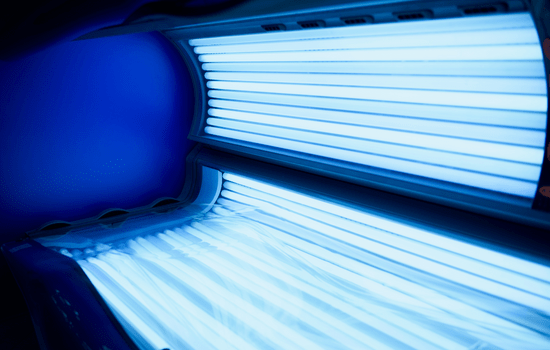
Are there any potential health risks associated with using either type of light for disinfection purposes?
Using blacklights for disinfection is generally considered safe, as exposure to them for a short period shouldn’t cause any health risks. Blacklights may be used to see things that other lights can’t, like urine, semen, and blood, but they cannot reveal bacteria or other germs. However, UV-A light is still the safest for disinfecting surfaces. As an added precaution against any potential risks associated with using blacklights, it is recommended that people attending events featuring black lighting wear long-sleeved shirts and pants in neon colors or white.
FAQs
Here are some of the most frequently asked questions about black lights:
What kind of light do black lights emit?
Blacklights emit a type of light that is different from regular light. This type of light is known as UV-A, and it can be used to see objects that other lamps cannot see, such as tattoos. Blacklights come in both tube and bulb form, and they work by emitting less energy than regular light, allowing them to reveal hidden details in the objects they illuminate.
What is a black light used for?
Blacklight is a type of ultraviolet light commonly found in many applications, from artistic to diagnostic. Blacklights are used for non-destructive testing and to detect leaks and cracks in materials, such as refrigeration systems. They can also be used for aesthetic purposes or to check for illicit substances in establishments like bars and bowling alleys. It is important to remember that black lights should only be used for short periods; research should be done before using them in an unfamiliar setting. While black lights do not have germicidal properties, they may still be useful as a substitution for UV light, depending on the application.
What shows under black light?
Under a black light, many items that are not visible under normal lighting conditions can be seen. This includes fluorescent materials, blood, urine, semen, and other bodily fluids. Fluorescent paint and decorations also appear under black light to create the illusion of self-illumination. Additionally, uranium glass emits fluorescent light when exposed to UV light which is used in art and theater productions. Finally, black lights are also used in puppetry to highlight the puppeteers’ movements.
Is there a difference between UV light and black light?
While UV light and black light are both types of ultraviolet light, they have different purposes. Black light is used to see things in the dark that would be invisible under regular light, like scorpions or tonic water. On the other hand, UV light reveals bacteria and germs on surfaces. Interestingly, some common household items, such as teeth whiteners and laundry detergent, will glow under black light. While both types of light use ultraviolet radiation, UV light is more efficient and has a longer lifespan than black light.
UV LEDs are much easier to clean than black ones, so if you’re looking for a low-maintenance option, UV LEDs are the way to go. However, black fluorescent lights are often cheaper than their LED counterparts – so if you’re on a tight budget, fluorescent might be the better option (especially for short-term use). Just remember to factor in lifetime and efficiency when calculating any cost of ownership!

